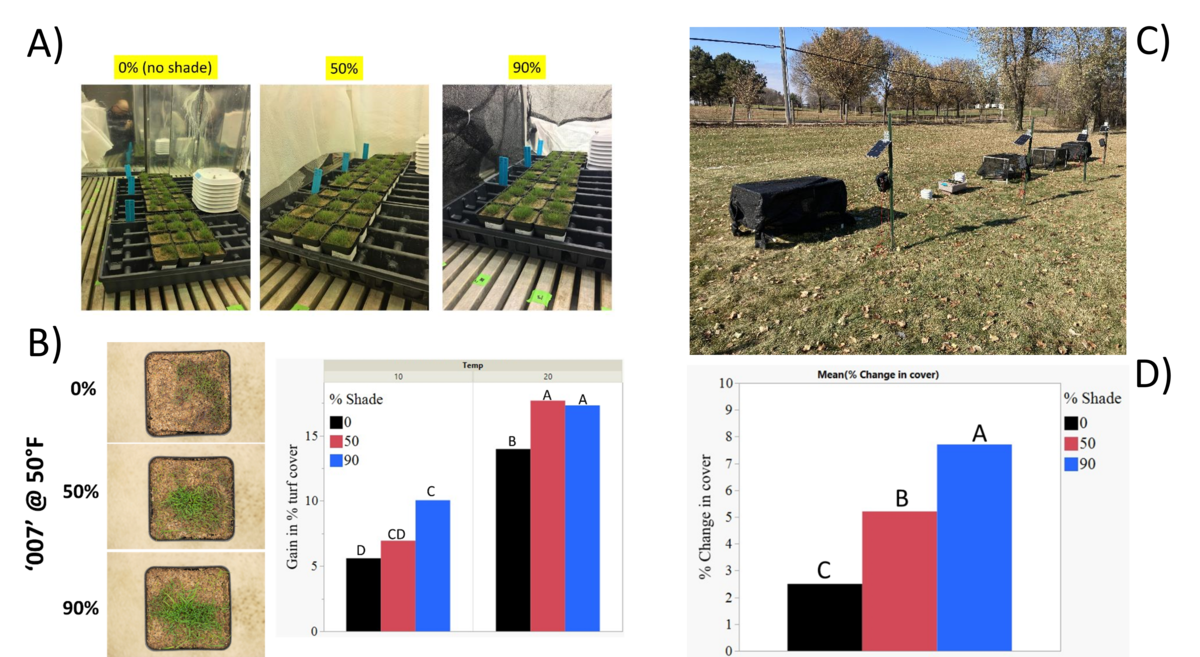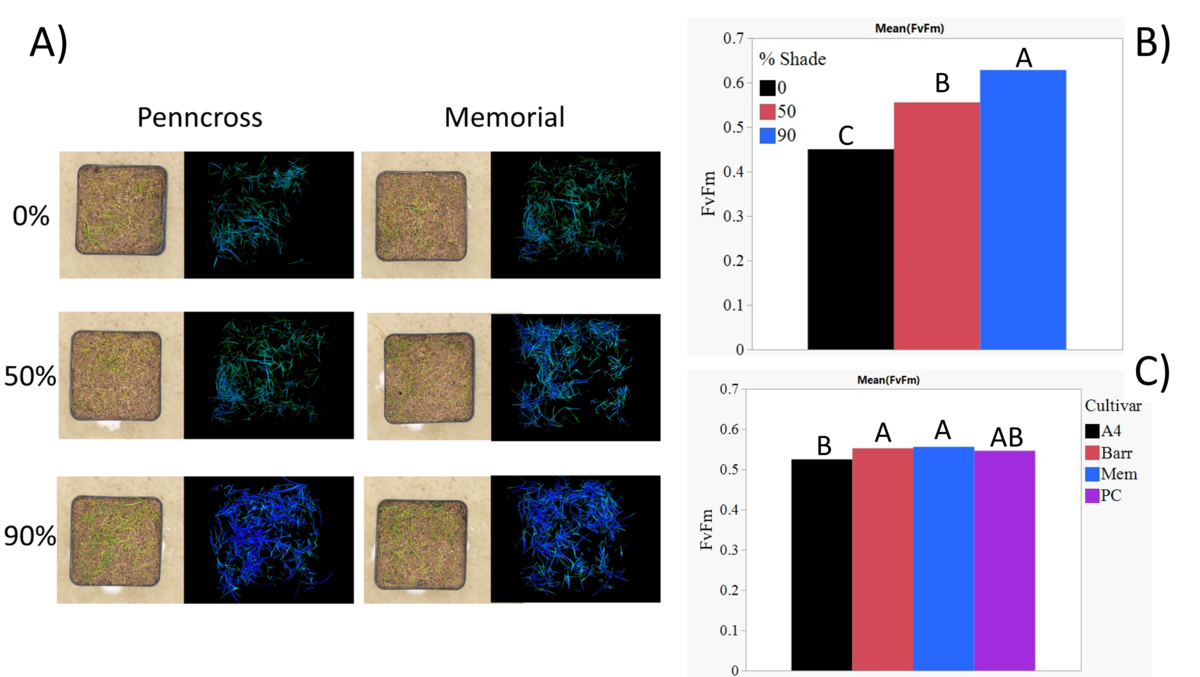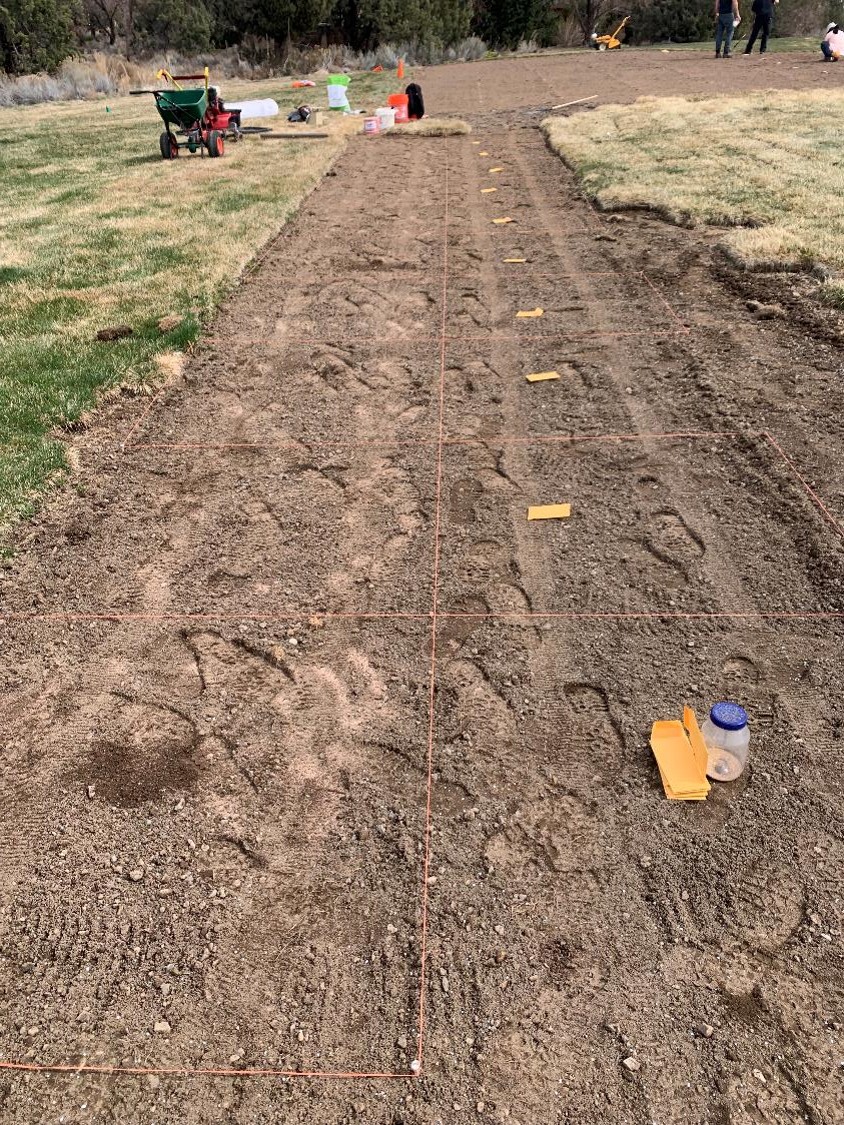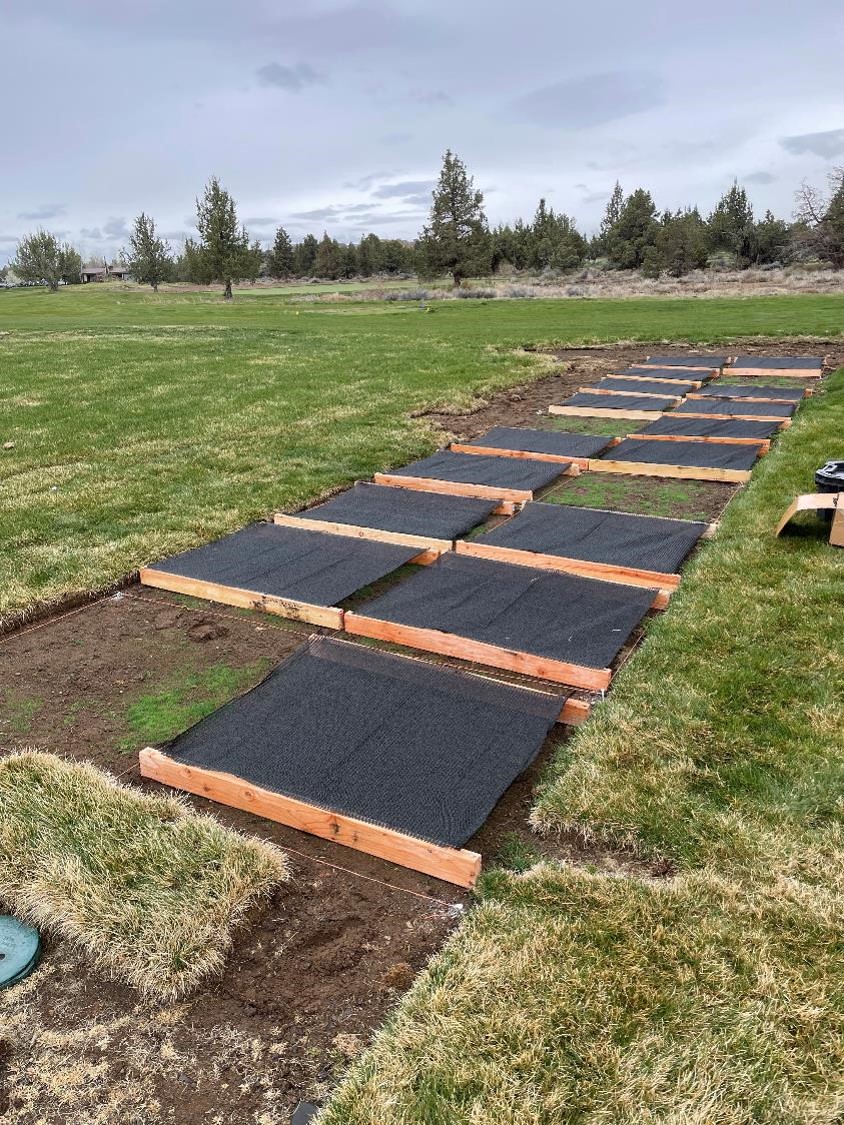By Alec Kowalewski, Oregon State University and Dominic Petrella, Ohio State University
The shoulder seasons can have dramatic temperature changes during the day and large differences in lows/highs from day-to-day, especially during the winter-to-spring transition window. Lows can often be near or below freezing and daytime highs might be around freezing or as high as 80°F in many parts of the northern U.S. Unfortunately, if you have winterkill, and you are forced to re-seed during this timeframe, the weather is usually not cooperative, resulting in stressful conditions for the seedlings. An often overlooked piece during this seasonal shift is light intensity. In some regions it can often be very sunny on days where it is still cold in the morning or stays chilly throughout the day. These conditions, bright and cold/chilly, are stressful for plants in general, and can be more stressful for seedlings.

The stress resulting from the combination of high-intensity light and low-temperature is called low-temperature photoinhibition. With this, light itself damages the photosynthetic machinery in the plant, and is exacerbated by the low-temperature. This can slow growth dramatically, decreasing the success of spring overseeding. This stress could be reduced by decreasing light intensity during these periods. We have looked at low-temperature photoinhibition in a series of creeping bentgrass cultivars, and found that reducing the light intensity during these cold snaps (50°F) can significantly reduce stress and improve establishment (Figures 1 and 2).

We are currently scaling this approach and testing if reducing light intensity on spring-seeded creeping bentgrass improves establishment by reducing stress during periods of cold snaps in field plots. This is being evaluated at Oregon State University, University of Minnesota, University of Wisconsin, Michigan State University, Iowa State University, and in Norway. For this we are seeding ‘Luminary’ creeping bentgrass, and after plants have germinated, placing shade cloth that reduces light intensity by 70% over the plots for either 7, 14, 21, or 28 days and evaluating turfgrass establishment.
Recent results from Oregon State University

To evaluate the relationship between light intensity and spring growth and development in Central Oregon, creeping bentgrass was seeded April 11, 2024 at the Pronghorn Resort in Bend, OR (Figure 3). All plots were covered with a germination blanket from April 11 to April 25. On April 25, the germination blanket was removed, and shade cloth structures were placed over the creeping bentgrass with the exception of a control treatment that did not have a shade structure (Figure 4). These shade structures are being removed in subsequent order at 7, 14, 21 and 28 days (May 2, 9, 16 and 23, respectively).

Preliminary findings suggest that the shade structures improve turfgrass establishment based on percent cover, visual quality, and normalized difference vegetation index (NDVI) values. It is yet to be determined how long these shade structures should remain, but preliminary data would suggest a minimum of 7 days after germination. It is important to note that in Central Oregon temperatures this May have regularly been around freezing in the morning, and in the 60s and 70s in the afternoon. There have also been a few light snow flurries in April. These conditions are quite regular for a spring in Central OR. While these results are promising, more data is needed before we can determine if this approach should be used by turfgrass managers. Unfortunately, the particular combination of environmental conditions needed for photoinhibition will not occur at every one of our research locations each year; we hope that over the next few years to confirm these results at other WinterTurf research sites.